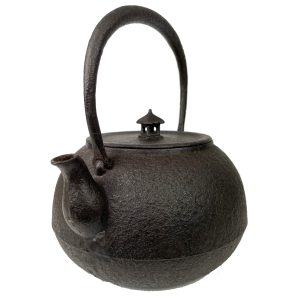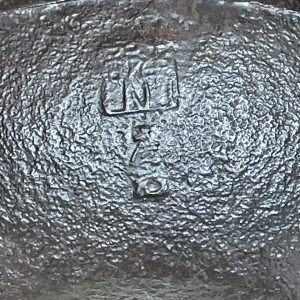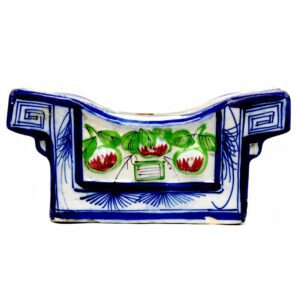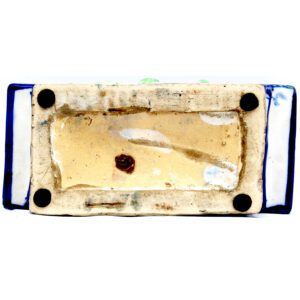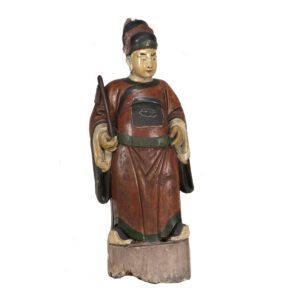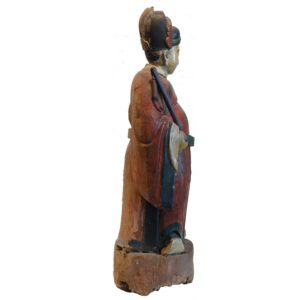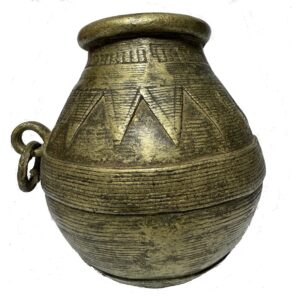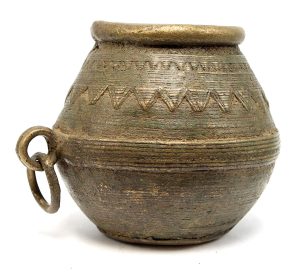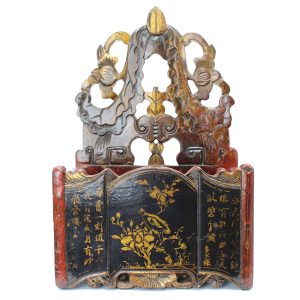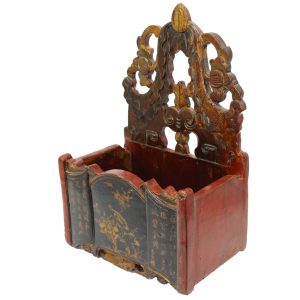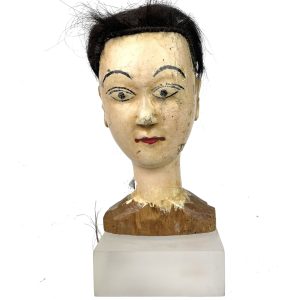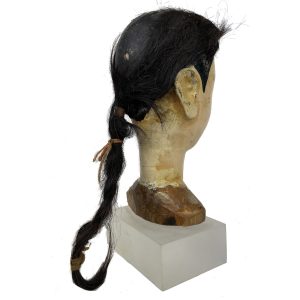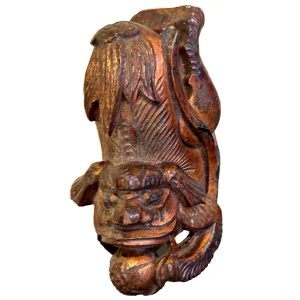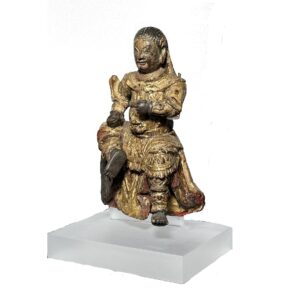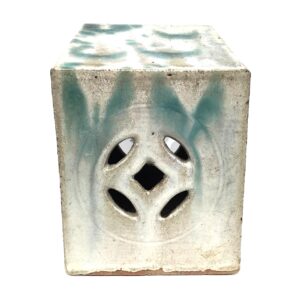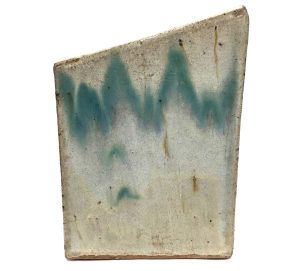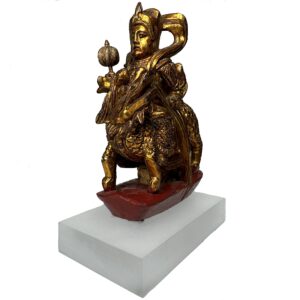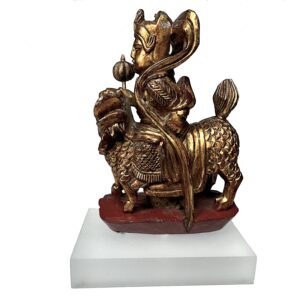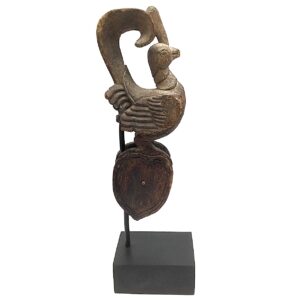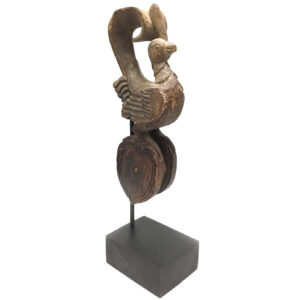Showing 25–36 of 164 results
-
Sale!


$295.00 Original price was: $295.00.$245.00Current price is: $245.00.
Ht: 9.25″ W: 8″ D: 7.25″ | CALL 213-568-3030 OR EMAIL [email protected] FOR SHIPPING COST
Meiji hand crafted cast iron Tetsubin, simple yet elegant textured surface, unique shape top temple ornamental knob. Manufacturer’s seals on side. Perfect tea lovers gift, it is recommended for display only to enhance any kitchen.
-
Sale!


$115.00 Original price was: $115.00.$105.00Current price is: $105.00.
H: 4″ W: 9.5″ D: 4.5 ” | FREE SHIPPING
Multicolored ceramic opium pillow, hand-painted green and red florals, fruits and vases in relief, blue cobalt border. Top and bottom seals to approve for export as antique.
-
Sale!


$4,800.00 Original price was: $4,800.00.$3,750.00Current price is: $3,750.00.
H: 32″ W: 9″ D: 8″ | CALL 213-568-3030 OR EMAIL [email protected] FOR SHIPPING
Lu Donghin, most celebrated of 8 Taoist Chinese Immortals, rides on clouds with a 2-edged sword to cut through greed, lust, sorrow. Venerated in temples, grottoes, sacred mountains, he is associated with medicine, elixir of life and power over evil spirits. This 18th large figure with cloud design on chest.
-
Sale!


$165.00 Original price was: $165.00.$125.00Current price is: $125.00.
H: 4.25” Dia: 4” | FREE SHIPPING IN CONTINENTAL U.S.
Dhorka brass lost wax grain and rice measuring bowl. One-of-a-kind intricately decorated with horizontal and triangular striations. Bowls were symbol of Hindu goddess Lakshmi placed on home altars for puja.
-
Sale!

$155.00 Original price was: $155.00.$125.00Current price is: $125.00.
H: 3.875” Dia: 4.125” | FREE SHIPPING IN CNTINENTAL U.S.
Dhorka brass lost wax grain and rice measuring bowl. One-of-a-kind intricately decorated with horizontal and triangular striations. Bowls were symbol of Hindu goddess Lakshmi placed on home altars for puja.
-
Sale!


$350.00 Original price was: $350.00.$295.00Current price is: $295.00.
H: 10.75″ W: 7″ D: 4.5″ | CALL 213-568-3030 OR EMAIL [email protected] FOR SHIPPING.
The auspicious symbols on this charming document holder which are puns for “harmony and unity in marriage” indicate it was it was probably a wedding gift. And would serve that purpose admirably today as a decorative practical accessory and something you won’t find on a wedding registry.
-
Sale!


$295.00 Original price was: $295.00.$195.00Current price is: $195.00.
H: 8.5″ W: 4″ D: 2.75″ | FREE SHIPPING WITHIN CONTINENTAL U.S.!
Antique Chinese puppets were often made in several parts with removable heads. This antique carved head of a beauty has delicately painted features and an animal hair braided down the back. Since there is an area without hair towards the back, she likely originally wore a hat or headdress. A hole on top probably accommodated strings.
-
Sale!


$395.00 Original price was: $395.00.$295.00Current price is: $295.00.
Ht: 5″. W: 4″. D: 2.5″ | FREE SHIPPING WITHIN CONTINENTAL U.S.
Pair of red and gold antique carved lions were likely part of a woman’s bed frame to bless and protect its occupants. Each holds a spherical 5-leaf plums as wish for 5 Blessings of Happiness and for passing civilian official exams. Acrylic base.
-
Sale!


$375.00 Original price was: $375.00.$295.00Current price is: $295.00.
H: 8.25″ W: 5.5″ D: 4″ | FREE SHIPPING WITHIN CONTINENTAL U.S.
Statues of Guandi, the God of War and Justice were displayed in Temples and home shrines throughout China. Part of a larger carving, wears military maille, has taotie – a warning against gluttony – and is covered in gold as a sign of power.
-
Sale!


$235.00 Original price was: $235.00.$145.00Current price is: $145.00.
H: 7.25″ W: 5″ D: 5″ | FREE SHIPPING WITHIN CONTINENTAL U.S.
5-sided Shiwan glazed stoneware pillow with slanted top, used for smoking opium. The cool shell cradled the users’ heads and necks and hollow inside stored valuables. A candle placed inside emits a shadowy coin appealed to those in an opium state.
-
Sale!


$345.00 Original price was: $345.00.$275.00Current price is: $275.00.
H: 6″ W: 2.5″ D: 4″ | FREE SHIPPING WITHIN CONTINENTAL U.S.
Guan Ti, Chinese God of War and Justice dressed in military armor, officials cap with feathered wings and celestial scarf. Seated on mythical Hǒu . Along with Antique Thunder God Leigong on a Hou 16327. was part of bed carving to protect occupants.
-
Sale!


$235.00 Original price was: $235.00.$150.00Current price is: $150.00.
H: 10.5” W: 3.25” D: 2.375” | FREE SHIPPING WITHIN CONTINENTAL U.S.
Elegant antique heddle-pulley carved from a single piece of Burmese teak topped by a hamsa, a goose-like bird and sacred Buddhist symbol of wisdom. Auspicious symbolic animal images are believed protect the weaver, assure quality weaving, and pleases the gods and spirits. Finely weathered from time and use.
End of content
End of content

